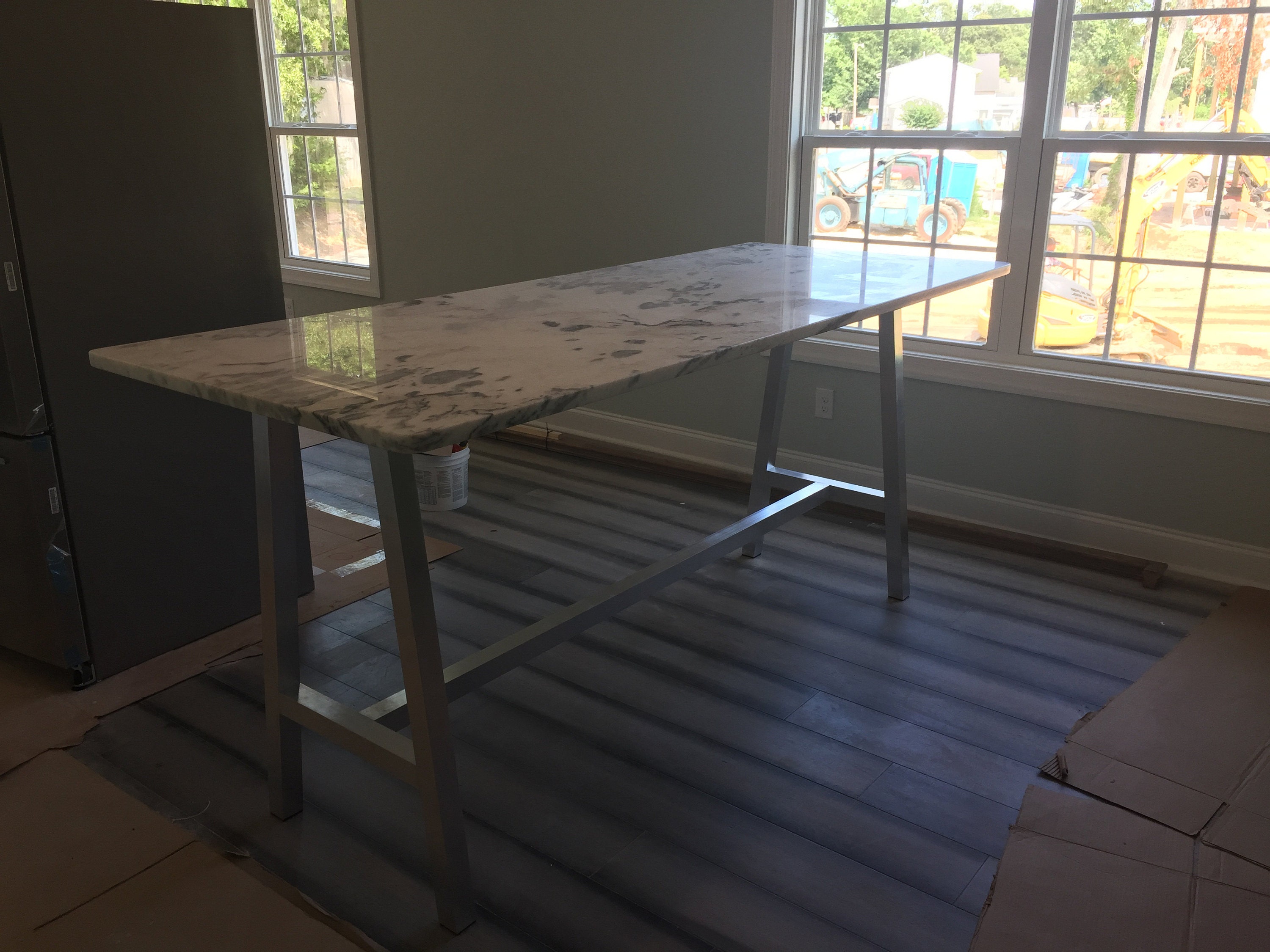For clarity let's review each of these braces from my previous article, Additional Bracing for Heavy vs. Lightweight, Flexible Slabs.
Anti Sag Braces: Anti sag braces are designed to support and remove the flexibility of a tabletop slab.
Lower Brace Add On: Lower Brace Add Ons are designed to remove the forces that attempt to hinge the table leg, effectively trying to tear it from the tabletop slab.
Stone Tops:
Guidelines:
- Stone supplier says you do not need Anti Sag Braces = no brace
- Span will be more than 4 feet = use Anti Sag Brace
- If slab is longer than 36 inches = use Lower Brace Add On
- Slab is more than 80 pounds + legs 22 inches or taller = use a Lower Brace Add On
- Slab is less than 150 pounds + legs 21 inches or shorter = no Lower Brace Add On required
- Slab is larger than 24 inches wide = use two (2) Anti Sag Braces
- Slab is wider than 36 inches = use three (3) Anti Sag Braces
- If 3/4-inch thick plywood subtop is glued to stone = Use only Lower Brace Add On
- If kitchen island overhangs off of cabinets + 37 inches or longer overhang = use Anti Sag Brace
- If kitchen island overhangs off of cabinets + 36" or shorter overhang = no Anti Sag Brace required
More Information:
Generally speaking, all stone tables of signification size require Anti Sag Braces. The exception is if your stone supplier states this is not required because they know the actual grain of your specific slab (do make sure they know your intended use, especially if it is a freestanding table rather than a counter top). This is true for both desk and coffee table heights. If the table has a 3/4" plywood subtop glued to the bottom, then anti sag braces are usually not necessary as this plywood provides anti-sag support. Some larger slabs can even require a thirid, middle leg in order to support the middle of the stone, so the dimensions are an important consideration. Let's look at some example projects to explore some specific situations and what braces were used.
The below images show a stone bar project. Both support sections use anti sag braces to support the stone between the legs since the span is longer than 36 inches, no plywood supbtop was used, and the corner of the L needs a support point to each corner leg. Because the right section is freestanding, the lower brace add on is used. The left section has a custom anti sag brace that attaches to the wall with a return plate. Since it is attached to the wall, the lower brace is not used.
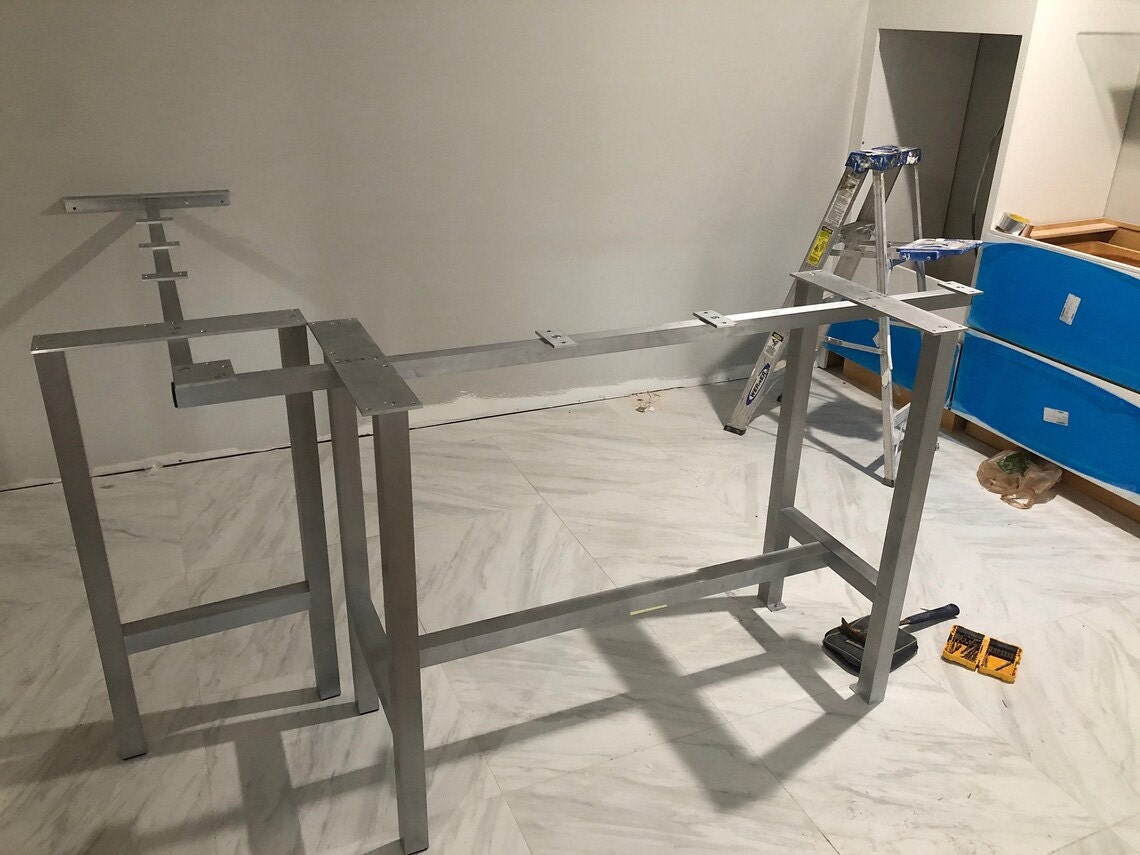
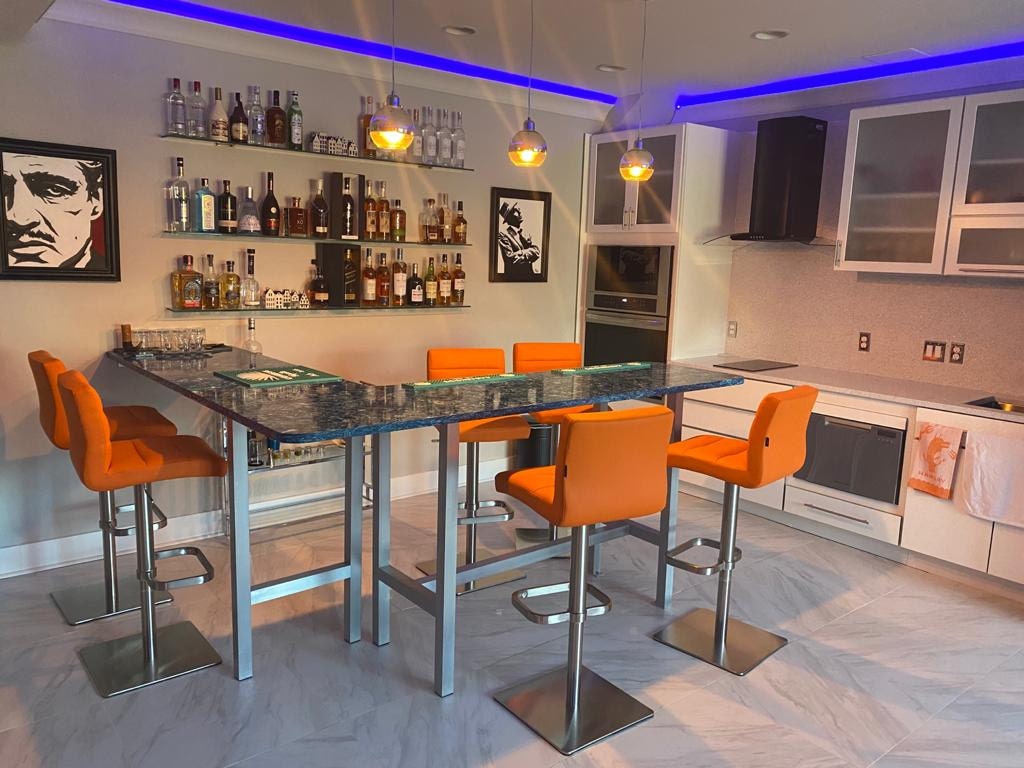
The below kitchen island does not require a lower brace add on. Kitchen island overhangs usually do not require a lower brace add on because the cabinet base stabilizes the whole structure.
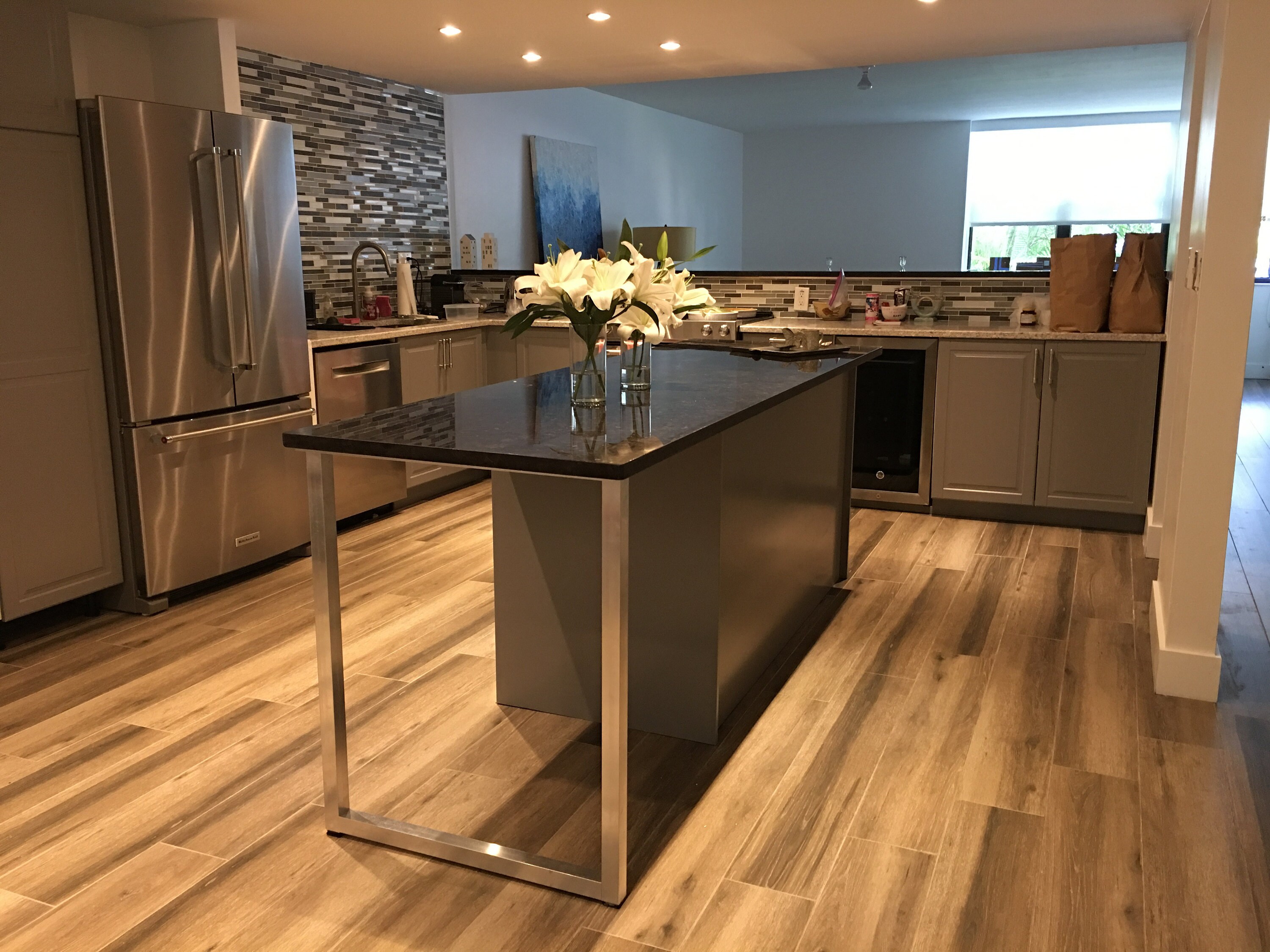
In the case of a kitchen island overhang that is longer than 36 inches, and only one leg is used, then the Anti Sag Brace(s) can be made to have a return plate that attaches to the side of the cabinet base.
If it is a freestanding kitchen island with my legs as the only support under the stone, then a lower brace is required. This freestanding stone table required two Anti Sag Braces and the Lower Brace Add on:
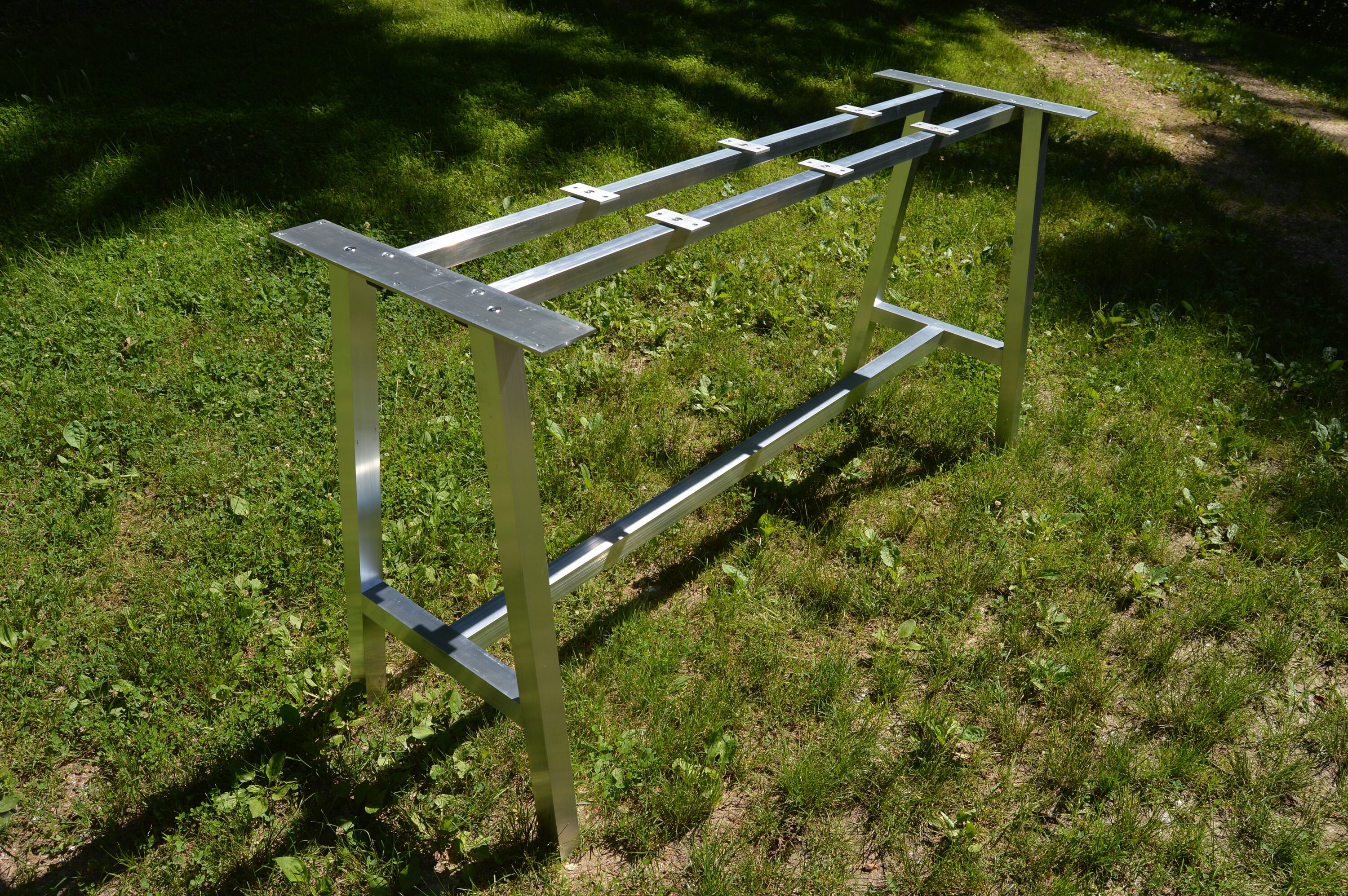
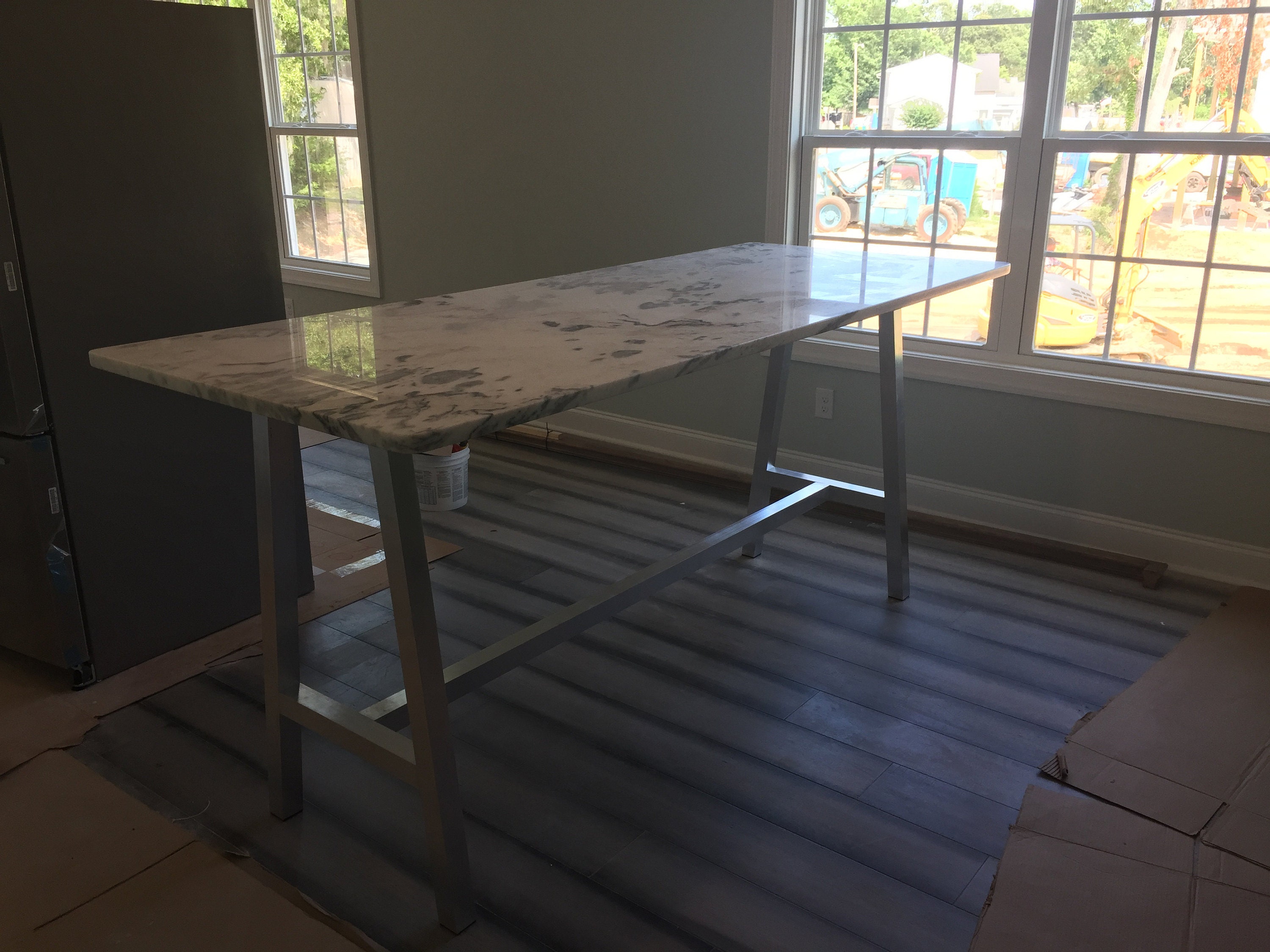
Of all the tabletop material types, stone requires the most additional structure and support, but again this depends on the slab material length, width, and height of the table. Feel free to contact me with questions about your specific project!

